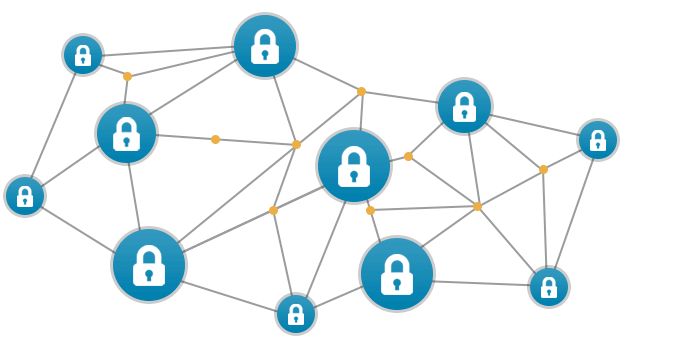Node.js and Cryptography
Crypto node - Node.js provides a comprehensive set of cryptographic capabilities, making it an ideal platform for implementing various security measures in server-side applications.
Obtain a comprehensive document about the application of sushi crypto that is effective.
Node.js utilizes the OpenSSL library, a robust and widely trusted open-source cryptography toolkit, to offer a wide range of cryptographic algorithms and functions.
Common Cryptographic Algorithms
- Hashing: MD5, SHA-1, SHA-256, SHA-512
- Encryption: AES, DES, RC4, Blowfish
- Digital Signatures: RSA, DSA, ECDSA
These algorithms enable Node.js applications to perform secure data encryption, decryption, hashing, and digital signing.
You also will receive the benefits of visiting blockchain gaming today.
Benefits of Using Node.js for Cryptography
- Extensive Library: Node.js's integration with OpenSSL provides access to a comprehensive suite of cryptographic algorithms and functions.
- Asynchronous Operations: Node.js's non-blocking I/O model allows cryptographic operations to be performed asynchronously, improving application performance.
- Community Support: Node.js has a vast and active community, providing extensive documentation, tutorials, and support for cryptographic tasks.
Cryptographic Modules in Node.js
Node.js offers a robust suite of cryptographic modules for various security tasks. These modules provide high-level APIs for encryption, decryption, hashing, and other cryptographic operations. Understanding these modules and their functionalities is crucial for building secure Node.js applications.Core Cryptographic Modules
Node.js provides several core cryptographic modules, each with its specific functionality:- Crypto: The primary module for cryptographic operations. It offers a comprehensive set of algorithms for encryption, decryption, hashing, signing, and more.
- Hash: Provides a dedicated API for hashing algorithms, such as MD5, SHA-1, and SHA-256.
- Hmac: Facilitates the creation of HMAC (Hash-based Message Authentication Code) for data integrity and authentication.
- Cipher: Handles encryption and decryption operations using various ciphers, including AES, DES, and RC4.
- Decipher: Similar to Cipher, but specifically designed for decryption operations.
Strengths and Weaknesses
The choice of cryptographic module depends on the specific requirements of the application. Here's a comparison of their strengths and weaknesses:| Module | Strengths | Weaknesses |
|---|---|---|
| Crypto | Comprehensive functionality, wide range of algorithms | Complex API, requires in-depth understanding |
| Hash | Optimized for hashing operations | Limited to hashing algorithms |
| Hmac | Secure HMAC generation | Only supports HMAC-based operations |
| Cipher/Decipher | Efficient encryption/decryption | Requires careful handling of keys and initialization vectors |
Building Secure Applications with Crypto Node

Implementing cryptography in Node.js applications requires careful consideration of best practices to ensure the security and integrity of sensitive data. This section delves into the essential aspects of building secure applications with Crypto Node, including proper key management, vulnerability prevention, and secure implementation techniques.
In this topic, you find that metaverse crypto coins is very useful.
Best Practices for Implementing Cryptography
- Use strong cryptographic algorithms: Opt for industry-standard algorithms with proven security, such as AES, RSA, and SHA-256.
- Generate and store keys securely: Employ robust key generation methods and store keys securely using encryption, key management systems, or hardware security modules (HSMs).
- Handle sensitive data with care: Minimize the exposure of sensitive data by limiting access, encrypting data at rest and in transit, and following data minimization principles.
- Validate and sanitize inputs: Implement input validation and sanitization mechanisms to prevent malicious input from compromising cryptographic operations.
- Use libraries and frameworks: Leverage reputable cryptographic libraries and frameworks that provide secure implementations and best practices.
Key Management, Crypto node
Cryptographic keys are essential for securing data and should be handled with utmost care. Best practices for key management include:
- Use strong key generation methods: Generate keys using secure random number generators (RNGs) or dedicated key generation algorithms.
- Store keys securely: Employ encryption, key management systems, or HSMs to protect keys from unauthorized access.
- Limit key exposure: Restrict access to keys to authorized personnel and systems only.
- Rotate keys regularly: Periodically rotate keys to mitigate the risk of compromise.
- Revoke compromised keys: Promptly revoke and replace compromised keys to prevent unauthorized access.
Preventing Common Cryptographic Vulnerabilities
Understanding and preventing common cryptographic vulnerabilities is crucial for building secure applications. Some common vulnerabilities to watch out for include:
- Weak or predictable keys: Avoid using weak or easily guessable keys, as they can be easily compromised.
- Key reuse: Never reuse keys for different purposes, as it can compromise the security of all data encrypted with that key.
- Buffer overflows: Prevent buffer overflows in cryptographic operations, as they can lead to memory corruption and data exposure.
- Timing attacks: Implement countermeasures to prevent timing attacks that exploit differences in execution time to extract sensitive information.
- Man-in-the-middle attacks: Employ measures like TLS and certificate pinning to prevent man-in-the-middle attacks that intercept and modify data.
Advanced Cryptographic Techniques: Crypto Node

Asymmetric encryption, hashing, and digital signatures are advanced cryptographic techniques that play a vital role in securing sensitive data and facilitating secure communication in the digital age. These techniques offer robust protection against unauthorized access, data breaches, and cyberattacks.
Asymmetric Encryption
Asymmetric encryption, also known as public-key cryptography, involves using two mathematically linked keys: a public key and a private key. The public key is shared with others for encrypting data, while the private key is kept secret and used for decrypting it. This ensures that only the intended recipient can access the encrypted data.
Asymmetric encryption is widely used in secure communication protocols, such as TLS/SSL, which protect data transmitted over the internet. It also finds applications in digital signatures, electronic commerce, and blockchain technology.
Hashing
Hashing is a one-way mathematical function that converts an input of arbitrary size into a fixed-length output, known as a hash value or digest. The hash value is unique for each input and cannot be reversed to obtain the original data. This makes hashing ideal for creating digital fingerprints of data, verifying data integrity, and detecting unauthorized alterations.
Hashing is extensively used in password storage, data integrity checks, and digital signatures. It plays a crucial role in blockchain technology, where it is used to secure transactions and create tamper-proof records.
Digital Signatures
Digital signatures are electronic signatures that provide authenticity, integrity, and non-repudiation in digital communication. They are created by using a private key to encrypt a hash of the data being signed. The resulting digital signature is then attached to the data and can be verified using the corresponding public key.
Digital signatures are essential for ensuring the authenticity and integrity of electronic documents, contracts, and transactions. They are widely used in digital certificates, email security, and blockchain technology.
Case Studies and Examples
Node.js has gained widespread adoption for cryptography, enabling the development of secure and efficient applications. Let's explore real-world case studies and examples of how companies and organizations have leveraged Node.js for cryptographic solutions.
PayPal
- PayPal utilizes Node.js for secure payment processing, implementing encryption algorithms to protect sensitive financial data during transactions.
- They have successfully integrated Node.js into their platform, enhancing the security of their payment infrastructure.
Uber
- Uber employs Node.js for its authentication and authorization systems, ensuring secure access to its services.
- Node.js has helped Uber implement robust encryption mechanisms to safeguard user credentials and protect against unauthorized access.
Netflix
- Netflix uses Node.js to encrypt and protect sensitive user information, including account details and payment data.
- By leveraging Node.js, Netflix maintains the confidentiality and integrity of its user data, enhancing customer trust and security.
